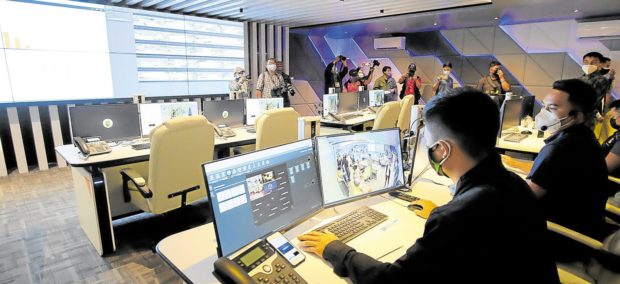Baguio shifts to digital governance

REAL-TIME MONITORING: The Smart City Command Center at Baguio Convention Center, launched on Sept. 10, is the first in the country and features real-time monitoring of emergency and crisis management to protect lives and properties in the summer capital using state-of-the-art technology. —PHOTO COURTESY OF NEIL CLARK ONGCHANGCO
BAGUIO CITY, Benguet, Philippines — Egg-shaped devices attached to power lines will be bringing the internet to the most remote corners of Baguio during the coronavirus pandemic, one of the innovations employed by the city’s ambitious government automation program that was launched here on Friday.
Using electromagnetic waves generated by power lines, internet signals can ride through ordinary power cables straight to households using proprietary technology that is being piloted in Baguio by the National Transmission Corp. (TransCo).
The innovation will help Baguio residents transition to online government services that would be supervised by the Baguio Smart City command and control center, which was inaugurated on the same day.
Baguio Smart City is the country’s first fully integrated digital governance, surveillance, and emergency response system which was started in 2019 using a P200-million allocation from President Duterte.
Track mass movement
The system will “revolutionize how to manage critical assets, prevent and respond to emergencies, help preserve the environment and improve our social and health system,” said Mayor Benjamin Magalong during the launching program.
Article continues after this advertisementThe system will use multiple softwares and dedicated artificial intelligence to capture and analyze real-time data to allow quick and efficient response to various problems, including those related to the COVID-19 pandemic, he said.
Article continues after this advertisementFor instance, the system can track mass movement and determine where crowding or traffic congestion is taking place at a given time so medical front-liners and law enforcers can intervene. The system can also determine which areas have high air pollution and would alert government doctors about the likely community health risks.
The same feature allows the city disaster risk reduction and management office to come up with the appropriate amount of food and logistical aid should a landslide or flood occur.
Magalong said the system also used street cameras with face recognition features that help law enforcement track down suspected criminals. Police body cameras would be integrated into the system so operations are monitored and recorded.
The same system will help agencies locate and penalize traffic offenders.